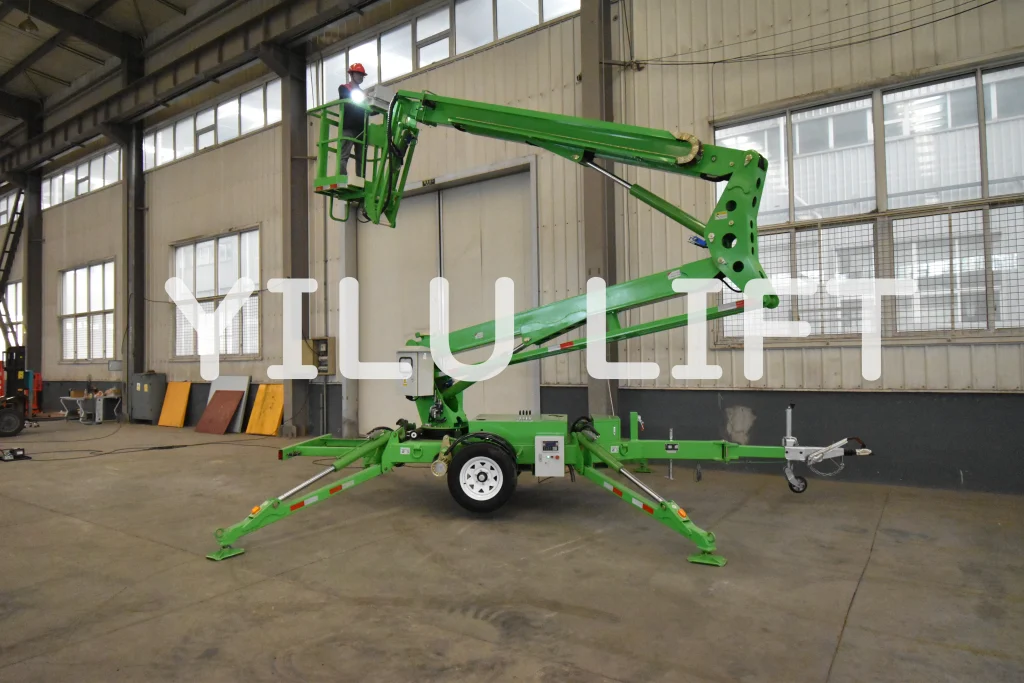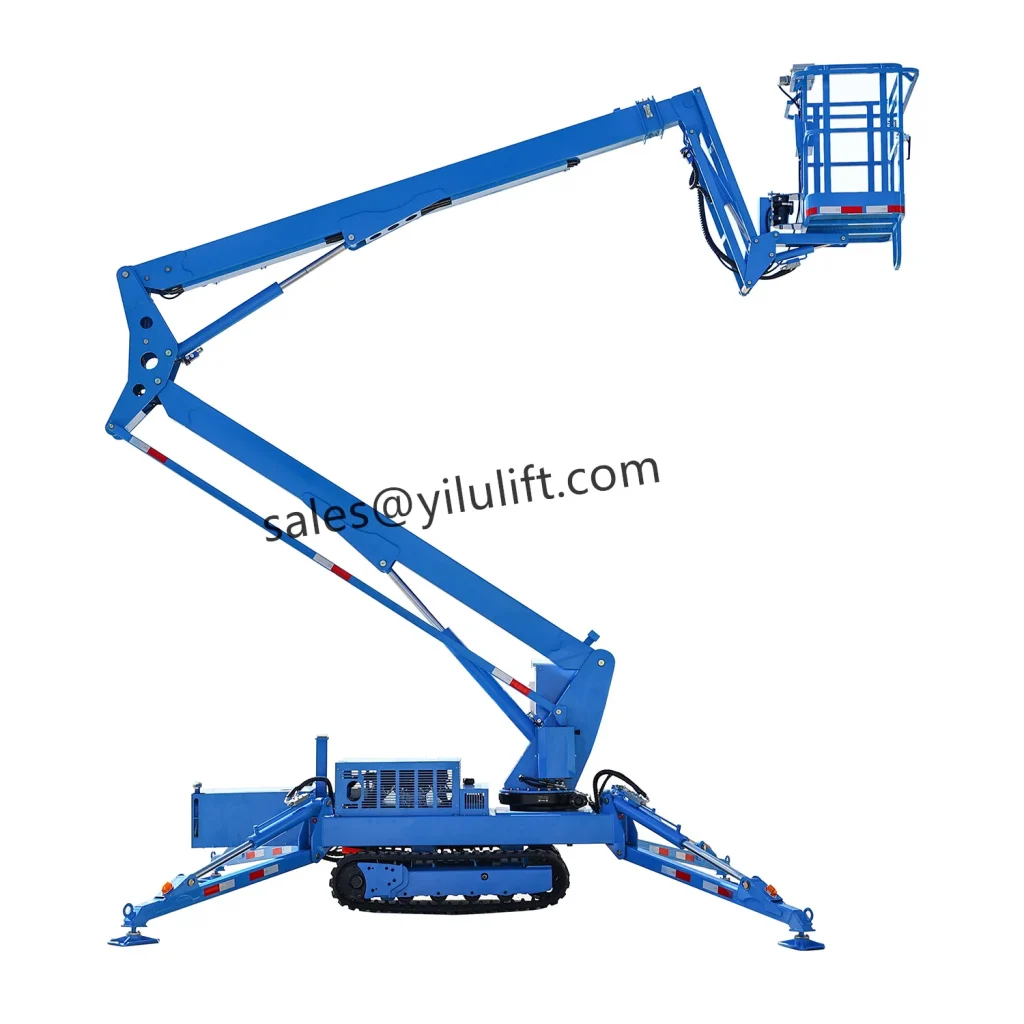What are Boom Lifts Used For?
What are Boom Lifts Used For?
Boom lifts are super handy tools for tons of industries, especially in places like construction, maintenance, and facility management. At YILU LIFT, we make a bunch of boom lifts and other aerial work platforms that keep things safe, fast, and flexible on job sites. But what do boom lifts actually do? And how can YILU LIFT’s gear make your work easier and safer?
This guide dives deep into what boom lifts are used for, their perks, and stuff to think about when picking one. Whether you’re building tall structures, fixing things in a factory, or sprucing up trees, knowing how boom lifts fit into your work is a big deal. Honestly, it’s pretty neat how these machines can change the game for tough jobs.

What Exactly is a Boom Lift?
A ascensor is a kind of aerial work platform. It uses a long arm, called a boom, to hoist workers and stuff up high. These machines shine when you need to reach spots that ladders or scaffolding just can’t handle.
At YILU LIFT, we focus on building boom lifts that are easy to use, super tough, and ready for all sorts of rough conditions. Our models have hydraulic and electric systems that lift smoothly and reliably, no matter the task. For example, a YILU LIFT boom lift in a warehouse can make reaching high shelves a breeze, saving time and keeping workers safe.
Different Types of Boom Lifts and Their Uses
1. Telescopic Boom Lifts (Straight Boom Lifts)
Telescopic boom lifts stretch out in a straight line. They give you awesome vertical reach without much side-to-side movement. These are great for construction sites where you need to go way up, like for fixing buildings or setting up heavy gear.
Common Uses:
- Building tall structures or fixing their outsides.
- Setting up big, heavy equipment.
- Checking roofs or structures.
For instance, a YILU LIFT telescopic boom lift can help at a high-rise site in Chicago. It can hoist steel beams or do exterior work up to 30 meters high. That’s way faster and safer than messing with scaffolding.
2. Articulating Boom Lifts (Knuckle Booms)
Articulating boom lifts have joints, or “knuckles,” that let the arm bend. This makes them super flexible for squeezing into tight spots or reaching over stuff. They’re perfect for city construction or maintenance jobs in cramped areas.
Common Uses:
- Indoor and outdoor high-up tasks.
- Reaching over obstacles like walls or machines.
- Trimming trees or landscaping.
A YILU LIFT articulating boom lift can weave around corners or walls. It’s great for stuff like cleaning windows or fixing electrical lines on tall buildings. In a New York skyscraper, one of these lifts helped workers clean glass around tricky angles, saving hours of work.
3. Towable Boom Lifts
Need something you can move easily? Towable boom lifts are compact and budget-friendly. You can hitch them to a truck and take them to different sites. They’re awesome for short jobs or projects that need you to bounce around.
Common Uses:
- Fixing up houses or small buildings.
- Putting up signs outside.
- Small construction gigs.
A YILU LIFT towable boom lift is a lifesaver for contractors hopping between jobs. Say a roofing crew in Texas needs to check apartment roofs. This lift is easy to tow and set up, making quick work of inspections without needing big machines.

Advantages of Using Boom Lifts
1. Safety Comes First
Safety is a huge win with boom lifts. Working high up in construction, electrical jobs, or even window cleaning can be risky. Boom lifts give you a solid, safe platform, way better than wobbly ladders or clunky scaffolding. They cut down on fall risks big time.
YILU LIFT boom lifts come with cool safety stuff like:
- Non-slip platforms to keep your footing.
- Emergency stop buttons for quick halts.
- Overload protection to avoid tipping.
- Guardrails and safety rails for extra security.
2. Easy to Move and Super Flexible
Boom lifts beat scaffolding for getting around. Scaffolding takes forever to set up and shift. Boom lifts? You can move them quick to different spots. Many YILU LIFT models can spin around, so workers can hit multiple areas without dragging the whole machine.
3. Saves Money Compared to Old-School Methods
Scaffolding and ladders have their place, but they cost more in labor and setup time. Boom lifts let you finish jobs faster and smoother. That means less money spent on workers and fewer delays. YILU LIFT’s tough, trusty gear helps businesses keep projects on track and budgets happy.
Boom Lifts for Indoor vs. Outdoor Work
Outdoor Use
Boom lifts are a go-to for big outdoor projects. They’re awesome for reaching high or wide spots. They’re perfect for construction sites building tall structures or doing exterior repairs.
A YILU LIFT telescopic boom lift in Arizona helped workers install solar panels on a factory roof. It reached over 25 meters, making the job quick and safe.
Indoor Use
Don’t think boom lifts are just for outside. They rock indoors too, especially in tight spaces or high ceilings. YILU LIFT’s articulating boom lifts can snake through narrow spots. They’re great for fixing ceilings, doing electrical work, or setting up equipment inside.
How to Pick the Right Boom Lift for Your Job
1. Height and Reach Needs
Pick a boom lift that can reach as high as your project needs. YILU LIFT telescopic boom lifts go super high for straight-up tasks. Articulating ones are better for side-to-side flexibility. A YILU LIFT model reaching 30 meters worked great for a Texas crew painting a high-rise.
2. Weight Capacity
Make sure the lift can handle the weight of workers and gear. YILU LIFT has models for light jobs or heavy lifting. Check the weight limit to avoid overloading. A Michigan factory used a YILU LIFT boom lift to hoist 500kg of tools and workers, no problem.
3. Terrain and Movement
Think about your work site’s ground. Rough or bumpy terrain? Go for a YILU LIFT tracked boom lift. It stays steady on uneven surfaces. A Colorado construction site used one to navigate rocky ground, keeping workers safe and on schedule.
Maintenance Tips to Keep Your Boom Lift Running
Regular Checkups Are Key
To keep your YILU LIFT boom lift in top shape, check it often. Look at the hydraulic system for leaks, clean battery connectors, and test safety features like emergency stops. A Florida contractor checked their YILU LIFT weekly, cutting breakdowns by 20%.
Protect Against Rust
Outdoor lifts face rain and humidity. Use anti-rust sprays on metal parts. Store the lift in a dry spot or use a cover. A YILU LIFT boom lift in Seattle stayed rust-free with regular coatings, even in wet weather.
Watch the Battery
For electric boom lifts, check the battery often. Clean connectors to avoid rust. Swap out weak batteries.
Keep the Motor Happy
The drive motor keeps self-propelled lifts moving. Listen for weird noises or slow movement. Oil moving parts as the maker says. A YILU LIFT boom lift in Nevada ran smoothly after monthly motor checks, avoiding costly repairs.
Why Choose YILU LIFT Boom Lifts?
YILU LIFT boom lifts are built to last and keep workers safe. Our models meet tough safety rules like EN131 and ANSI A14. They come with features like non-slip platforms, strong hydraulic systems, and easy controls. Plus, they’re versatile for indoor or outdoor jobs.
Preguntas frecuentes
Q1. Can boom lifts be used indoors?
A: Yes, YILU LIFT’s articulating boom lifts are perfect for indoor work, especially in tight spaces where flexibility is essential. They can easily maneuver around obstacles and are ideal for maintenance and repair tasks.
Q2. How high can a boom lift reach?
A: Our YILU LIFT models can reach heights ranging from 12 meters to 45 meters, depending on the lift’s type and specifications. Always choose a lift that meets your project’s height requirements.
Q3. What is the difference between a boom lift and a scissor lift?
A: While both provide elevated platforms, a boom lift offers horizontal and vertical reach, making it ideal for tasks requiring access over obstacles. Scissor lifts, on the other hand, only move vertically and are more suited for tasks on a level surface.




